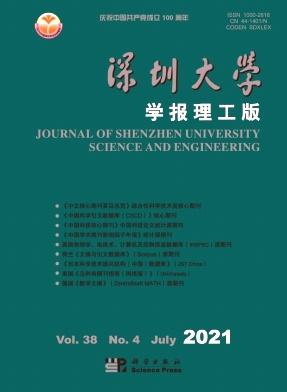Preparation and regulation of perovskite hydroxide nanomaterials
Q4 Engineering
Shenzhen Daxue Xuebao (Ligong Ban)/Journal of Shenzhen University Science and Engineering
Pub Date : 2023-07-01
DOI:10.3724/sp.j.1249.2023.04379
引用次数: 0
Abstract
SHAO Jing, LONG Xinyi, FANG Yusheng, and YU Zhouyang College of Chemistry and Environmental Engineering, Shenzhen University, Shenzhen 518071, Guangdong Province, P. R. China Abstract: Mn-based perovskite hydroxide (MnSn(OH)6) has a cubic perovskite structure and shows promising application potential in lithium batteries, electrolytic hydrogen production and other fields. In order to avoid the destruction of the surface-activity and the nanostructure of typical Mn-based perovskite materials due to hightemperature treatment, a simple wet chemical method was used to obtain MnSn(OH)6 nanomaterials with pure crystalline phase and tunable morphology. The effects of the synthesis process parameters on the crystal structure, microscopic morphology and composition distribution of materials were systematically studied by means of X-ray diffraction, scanning electron microscopy, transmission electron microscopy and other characterization methods, and the electrochemical properties of the prepared MnSn(OH)6 nanomaterials were preliminarily explored. The results show that the synthesis temperature has a direct influence on the formation of MnSn(OH)6 perovskite crystal structure. By adjusting the synthesis temperature, the generation of SnO2 impurities can be eliminated. The amount of precursors determines the number of crystalline nuclei of MnSn(OH)6, and the particle size and morphology of the MnSn(OH)6 product can be regulated by regulating the amount of precursors. The dispersion method plays an important role in both the crystal structure development and morphology regulation of the product. The electrochemical properties of the product need further exploration and optimization. The results of the study may氢氧化钙钛矿纳米材料的制备与调控
本文章由计算机程序翻译,如有差异,请以英文原文为准。
求助全文
约1分钟内获得全文
求助全文
来源期刊

Shenzhen Daxue Xuebao (Ligong Ban)/Journal of Shenzhen University Science and Engineering
Engineering-Engineering (miscellaneous)
CiteScore
0.90
自引率
0.00%
发文量
14
 求助内容:
求助内容: 应助结果提醒方式:
应助结果提醒方式:


